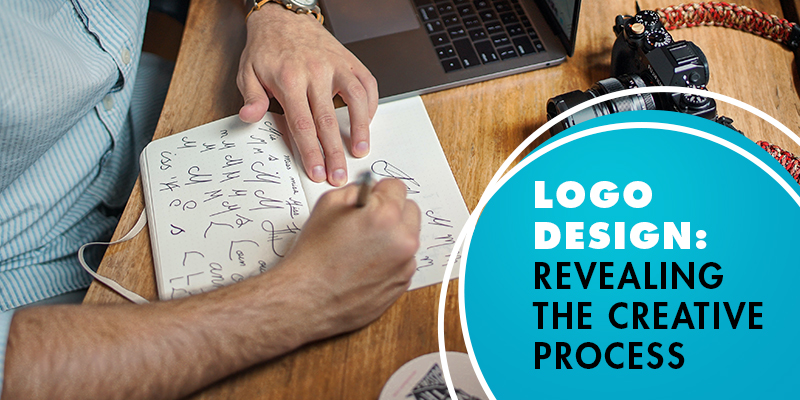Developing a strong logo doesn’t happen overnight, and creating a visual mark is more complex than most people realize. The mark must be appealing, appropriate for the intended audience, distinct (memorable), simple and versatile. The logo also must be adaptable to the various design applications where it will be used. Creating a logo requires a creative process and a good understanding of a client’s business and industry.
Let’s start with what a logo is and is not. In the purest sense, a logo is not communication; it is identification. It shouldn’t try to say a lot or be too complicated. A logo is a symbol made up of typography and imagery that identifies a business. The main element of a logo consists of a wordmark, and it is usually accompanied by a logomark and sometimes a tagline.
All designers are different, but most go through a similar creative process. Below is one creative process to guide logo development.
Step 1: The Design Brief
Before starting to design a logo, it’s important to get to know the client and to understand the company goals. This is where a design brief comes into play. Usually, we can gather some of the information we need from pre-existing sources, such as websites, social media channels, digital brochures, etc. Then we start by asking the client a list of questions about what they do, who their target audiences are, and how they are unique from their competitors.
If more information is required, The Vandiver Group has market research experts who can conduct surveys, interviews and focus groups to identify more information to be used in the creative process.
Step 2: Research
Once we get the appropriate info from the design brief, it’s time to dive deeper into the research phase. We’ll research and analyze the competitors’ branding, website, social media pages, and identify what works and what doesn’t work. Then, we’ll search the web for similar logos to see what has been done before to help make sure the logo concepts we’re creating are fresh and distinct. Next, we identify keywords related to the company and its products or services. These words will be used to inspire visual representations of the company.
Step 3: Conceptualization
Once we’ve gathered inspiration and the ideas begin to flow, the conceptualization phase begins. We take the concepts and ideas captured in the creative brief from the client and start by listing keywords. To keep them top of mind, we start sketching ideas on paper and then recreate them on the computer.
Step 4: Draft Production
Now that we have concepts, we start creating the logomark in multiple variations of the same concept. This involves experimenting with typography. The typography used should tie in with the logomark. For example, if the logomark has mainly sharp or rounded corners, we’ll want the wordmark to mirror that. If the logomark has more of an elegant, timeless look, we may go with a serif vs. sans-serif font. Occasionally, the logomark and wordmark may not be linked, so we’ll want to make sure they both represent the brand we’re helping create. Every detail matters. The result is three to four buttoned-up logo variations to present to the client.
Step 5: Present the Concepts
Once the logo concepts are executed, they are put into a presentation that showcases each concept. When a client sees a logo for the first time, they may not notice the main elements that make it unique. Therefore, we don’t just show the logo, we show the thought that went into each part by dissecting it into elements before revealing it. This helps the client understand the thought that went into the logo behind the scenes. In the presentation, the logo is also shown on marketing materials to give them an idea of how it could be used.
Step 6: Client Feedback
Once the logo options have been presented, we get the client’s initial thoughts and give them time to narrow the concepts down or request any changes. Usually, this process will go through two or three iterations before we get to the final.
Step 7: Delivery
Once the logo is finalized, it will be produced in a variety of file types which can be used in multiple applications. Multiple color variations of the logo are also created, such as a full-color, a dark one-color version to use on light backgrounds, and a white (reversed) one-colored version to use on dark backgrounds.
There’s a lot to consider when switching up your brand or developing a new logo. If you have recently developed a business or feel it’s time for your brand to get a facelift, we would love to help. We help companies large and small with their brand identity. Contact us today.
By Ryan Stiles, Senior Digital and Creative Manager at The Vandiver Group in St. Louis, Missouri
Follow The Vandiver Group on Facebook, Twitter, LinkedIn and Instagram. Read our other blogs here.

